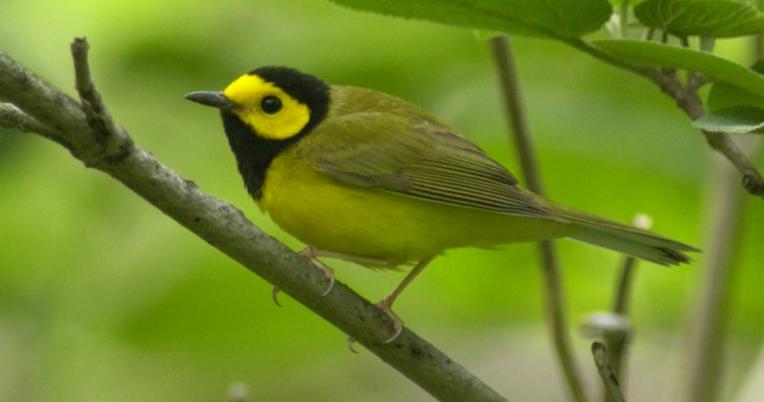Why we care
Over 80 species of birds are part of the forest ecosystem. Their vast diversity includes birds of many shapes, sizes and colors, from woodpeckers to hummingbirds, whip-poor-wills to warblers and turkeys to thrushes. Birds play significant roles that are necessary for healthy ecosystem function. Insect-eating birds control pests that would otherwise decimate agricultural crops and natural vegetation. Other birds scavenge carcasses and metabolize disease to remove it from the system. Others assist with dispersing seeds that would otherwise not fall far from the tree or plant, and they also act as pollinators. In addition to these systematic roles, birds are one of life’s more beautiful pleasures enjoyed by humans. Millions of people around the world enjoy watching and feeding birds; they are a gateway for many to learn more about the outdoors and nature.
Birds are also indicators of ecosystem health and relatively easy to monitor – one of the reasons why MOFEP bird monitoring has been conducted annually since the project’s inception in 1991. Despite the vital roles of birds and their enjoyment by millions, most North American bird species have experienced significant declines over the last few decades. In fact, a landmark article in the journal Science quantified net population loss of North American birds and found a loss of 2.9 billion birds, or 29% of North American birds, since 1970.
Why the declines? The transient and/or migratory nature of most bird species and their ability to quickly adapt to changing environments due to the mobility of flight make pinpointing exact reasons quite difficult. Common causes discussed by the ornithological community include large-scale land-use change, habitat modification and loss, the effects of widespread pesticide use on insect prey, climate change, and lack of necessary land management practices.
MOFEP allows researchers to track bird populations’ response to forest management. Fifteen of the 29 species included in the Missouri Bird Conservation Plan are shrub-nesting birds that require disturbance management, including tree harvesting and/or prescribed fire, to maintain the early-successional habitat structure they need for breeding. Long-term studies like MOFEP allow us to monitor potential large-scale changes in bird populations while studying the effects of forest management.
To learn more about Missouri Bird Conservation Plan and how you can manage your property for our most-threatened birds, visit Missouri Conservation Plan: Technical Section. If you’re interested in outreach and education goals, visit Missouri Conservation Plan: Outreach Section.
Objectives
- Monitor long-term forest management effects on breeding songbird abundance.
- Document rates of nest success of breeding birds and brood parasitism by brown-headed cowbirds in relation to forest management systems.
Data Collection
- Yearly breeding songbird surveys have been conducted since 1991, excluding harvest years (i.e., 1996 and 2011).
- Focal species studied:
- Mature-forest species: Acadian flycatcher, Kentucky warbler, ovenbird, wood thrush, and worm-eating warbler
- Early-successional forest species: Blue-winged warbler, hooded warbler, indigo bunting, prairie warbler, white-eyed vireo, and yellow-breasted Chat
Survey Methods
- Spot-mapping: Used to determine density by mapping all breeding songbirds territories within an area (1991 – 2003; 2008 – 2014).
- Bird banding: Used mist-nets to safely capture and band breeding songbirds in clearcuts to determine post-fledgling habitat use. (1991 – 2014).
- Point-counting: Uses song and visual detection at specified points to determine breeding songbird composition and relative abundance (2004 – present).
- Nest searching and monitoring: Determines breeding songbird reproductive success and brood parasitism rate by brown-headed cowbirds (1991 – present).
Summary of Results
Early-successional Forest Species
- Both even-aged and uneven-aged management provided habitat for several early successional species that were not present prior to management.
- Some early-successional forest species responded the most positively to even-aged management, specifically clearcut openings (7-32 acres), which create important early-successional forest habitat. In fact, the largest clearcut openings created the greatest benefit to these early-successional forest species. Whereas some of the smaller clearcut openings were not large enough to be used for breeding habitat by some species.
- Benefits from early-successional habitat creation in clearcuts begin to dissipate within 10 years of harvest as regenerating trees grow into dense stands. By 12-18 years clearcut areas begin to transition to bird species more typical of mature forests.
Mature Forest Species
- Significant declines in density on all sites from 1991 to present. Densities have not returned to initial survey levels.
- Decreases in abundance on the no-harvest sites suggest the cause is not caused by management but could be due to broader-scale changes or environmental factors.
- Even-aged and uneven-aged management resulted in similar densities of mature forest species.
Reproductive Success
- No significant change in nest survival from the pre- to the post-harvest period or with forest management.
- Rates of brood parasitism by brown-headed cowbirds remained low from pre-harvest to post-harvest but parasitism were higher for early-successional forest species (4%) than mature forest species (1%).
- Clearcuts are used by both groups of bird species and the dense vegetation may be important habitat during the post-fledging period of juvenile development.
Management Recommendations
- Maintaining large areas (>980 acres) of uncut forest should provide the highest densities of mature forest birds.
- A shorter harvest re-entry period of 7-10 years would provide sustained early-successional forest habitat and therefore help sustain populations of early-successional forest bird species.
- The surrounding landscape should be considered when applying management. For example, small, isolated forest patches should be managed differently than extensive closed forests. If early successional-forest habitat is more common in the surrounding landscape, conserving mature forest habitat may be higher priority and vice versa. Birds breeding in fragmented landscapes experience higher levels of nest predation and brood parasitism.
MOFEP Bird Publications (PDF, 76 KB)
List of MOFEP bird project publications.
Published on Aug 05, 2021
